I actually have the US NTSC edition of Stuart Little 2 as well, but it's a screener and not a public retail release. Still, the same duplication facility that made the retail version should have made this promo with the same physical tapes I would think. Should be close enough to where we can compare scenes that don't have the "screener" overlay text.
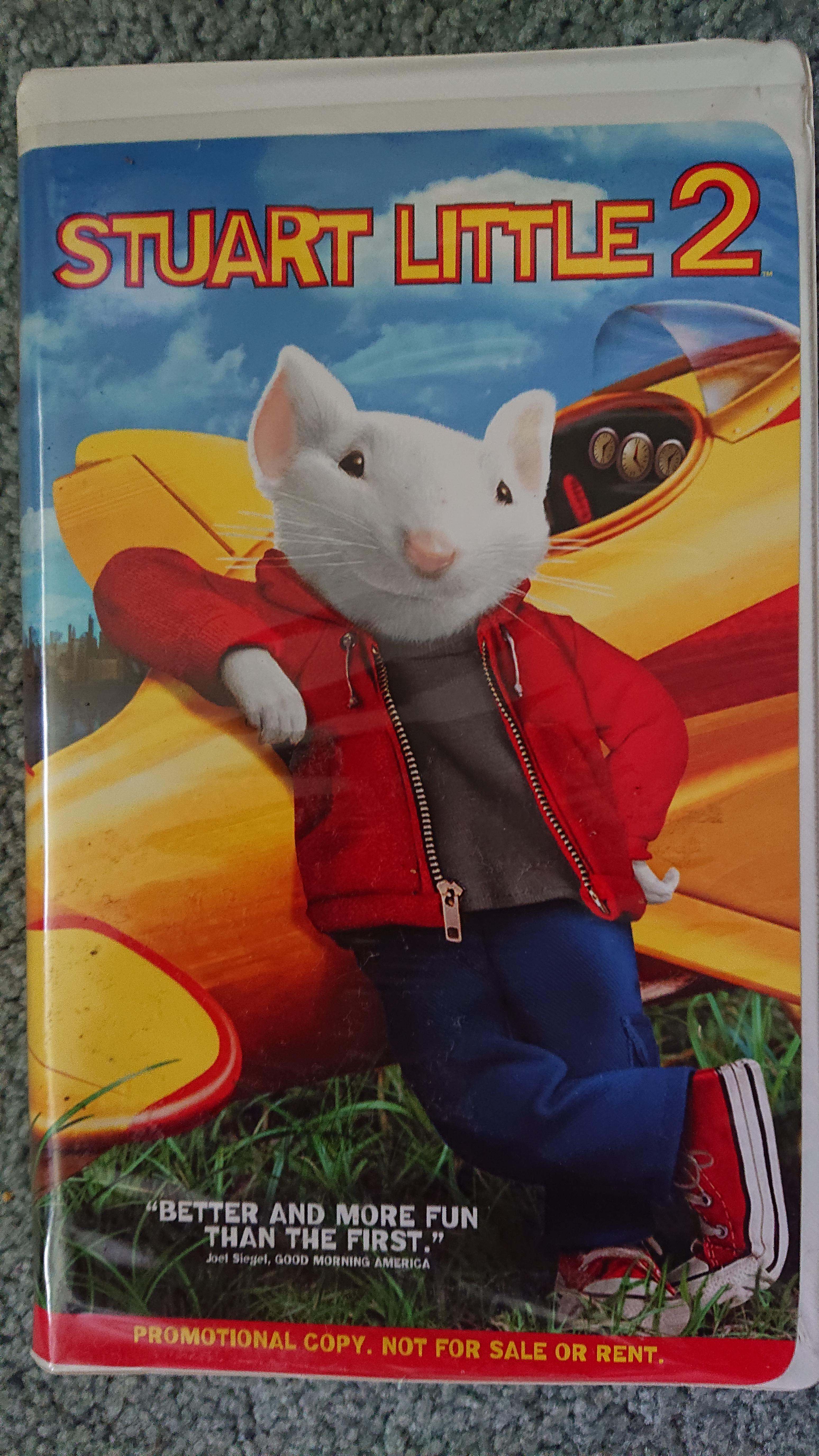
+ Reply to Thread
Results 631 to 660 of 1200
-
Last edited by Titan_91; 11th Jun 2021 at 17:23.
-
Yeah we're not quite there yet but it doesn't look too off. I think the different comes down a lot to the de-emphasis filtering, and to a lesser degree rf filters. Using
may help reduce the slight smeary effect on transitions a bit, that filtering still quite eyeballed still though. The main de-emphasis curve for VHS in vhs-decode currently looks reasonably close to the one in the specs, but not sure if it's entirely correct either.Code:-nld
When video is recorded on tape, the high frequencies are boosted a lot, and then reduced the same amount on playback. This helps reduce noise and retain detail, same concept was used for e.g fm radio, audio tape, broadcast tv and similar. The VHS spec started out with a standard de-emphasis curve with some minor leeway, but it seems manufacturers, including jvc themselves son started adding additional filtering including various forms of sharpening/emphasis/detail enhancement to squeeze out more "quality" from tapes. Detail enhancement is also a part of in VHS HQ. As you demonstrated in the comparison post you linked, the output ends up varying a bit between vcrs, so I don't know to what extent all this was standardized, and later decks also often had a degree of automatic adjustment of some of this on playback and recording.
The JVC technical guide I've linked before also notes that non-linear de-emphasis was added in to make "extended mode" speeds work better, so I think those have a degree additional filtering. It's also used for SVHS and Hi8.
Since we're software decoding here we can actually show how the raw demodulated picture looks before de-emphasis which may or may not be interesting:
With current deemph in vhs-decode:
With -nld option (crude non-linear de-emphasis):
-
Brad, that copy of SL2 I have is basically a retail release with all the same retail trailers you have. I just now verified as I had to disconnect and move my Laserdisc player from my capture PC and hook up my VCR. The only difference is a single added screen that states it's a promo copy. So yeah basically an apples to apples comparison with what you have. I can upload a capture of the trailers once decoded.
Last edited by Titan_91; 13th Jun 2021 at 15:15.
-
Decoded. My results, with the sharpness level at 50, are pretty good but I have slightly more ghosting on the right edges. SNR averages to 36dB. And actually the SNR is slightly lower until some of the other trailers. So maybe some of these trailers were mastered in analog, reducing SNR due to analog signal losses. Same frames from two of those screenshots:
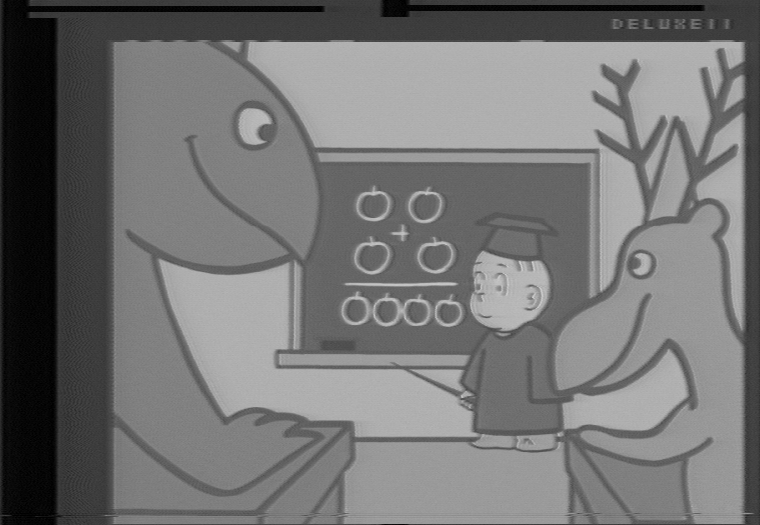
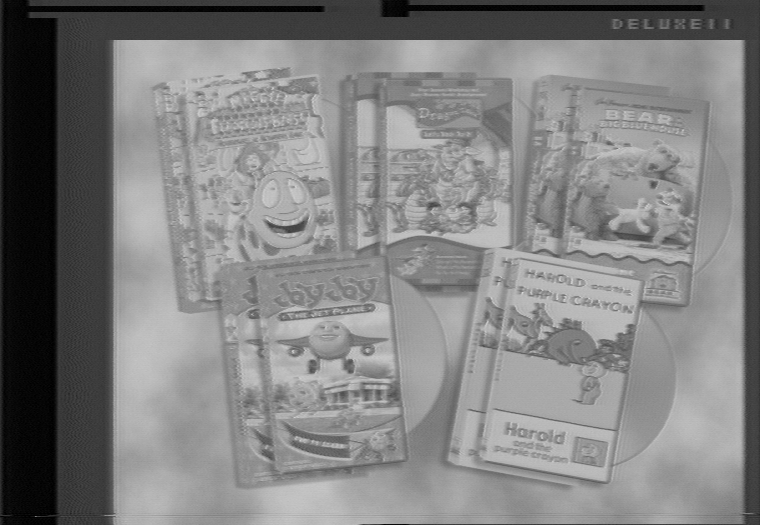
I compressed my capture to FLAC with the below command. I'll share it if Brad uploads an example so we can compare SNR and other stuff. Other variables isolated, differences should only be due to different VCRs, different cables, my 13MHz low pass filter, and different capture cards. Amplification is at 31 as well.
Code:flac --best --sample-rate=48000 --sign=unsigned --channels=1 --endian=little --bps=8 -f stuart.r8 -o stuart.flac
Last edited by Titan_91; 13th Jun 2021 at 22:38.
-
My retail copy says DELUXE82 rather than DELUXE11 in the VBI, for whatever that's worth.
Can't really see it in a still frame in ld-analyse, but if you decode and play back an MKV, there's high-frequency noise in this shot in my capture. Curious to see how yours compares.
[Attachment 59439 - Click to enlarge]
Trimmed two relevant portions to a more manageable filesize. Used ffplay as a quick double-check that I cut to the correct part, so I didn't have to do a decode.
Code:dd bs=28636363 skip=104 count=5 if=stuart2us_previews_1_pixelview.u8 of=sl2_pv_1.u8 dd bs=28636363 skip=210 count=24 if=stuart2us_previews_1_pixelview.u8 of=sl2_pv_2.u8 ffplay -hide_banner -async 1 -f rawvideo -pix_fmt gray8 -video_size 1820x525 -i sl2_pv_1.u8 -vf scale=910x525,eq=gamma=0.5:contrast=1.5 flac --best --sample-rate=28636 --sign=unsigned --channels=1 --endian=little --bps=8 --blocksize=65535 --lax -f sl2_pv_1.u8 -o sl2_pv_1.vhs.flac
My YouTube channel with little clips: vhs-decode, comparing TBC, etc. -
Your results are on average 5dB higher in SNR than mine. My picture is noticeably more noisy. Comparing luma, chroma, and combined frames:
Mine:
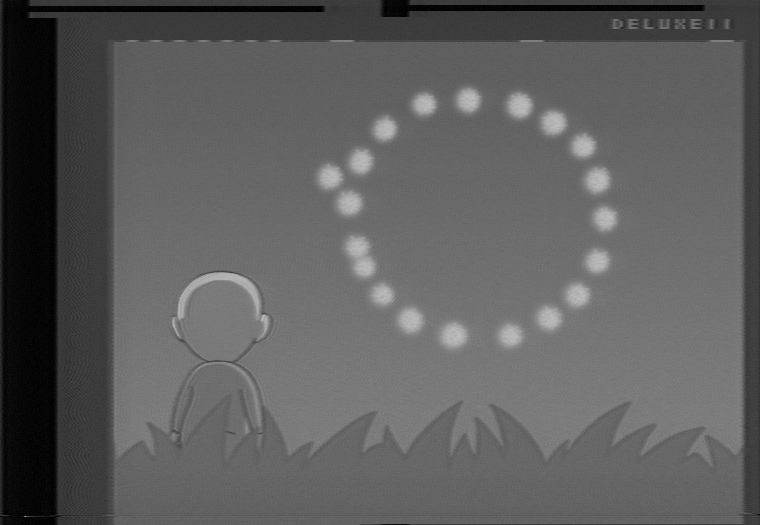
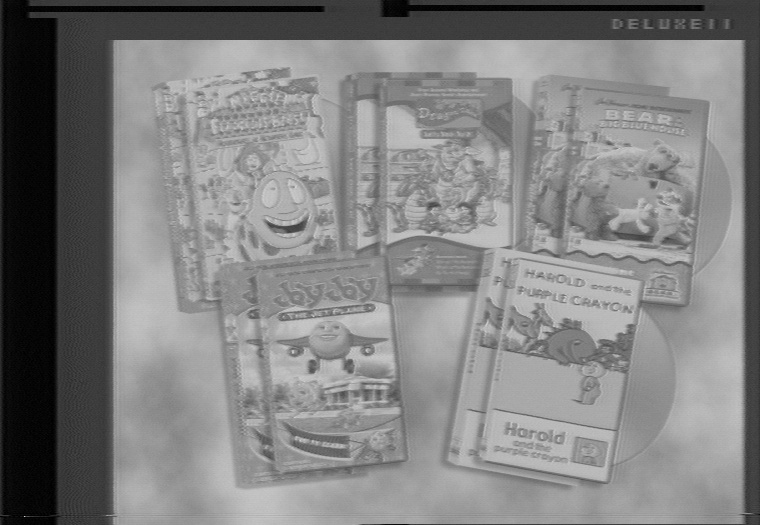
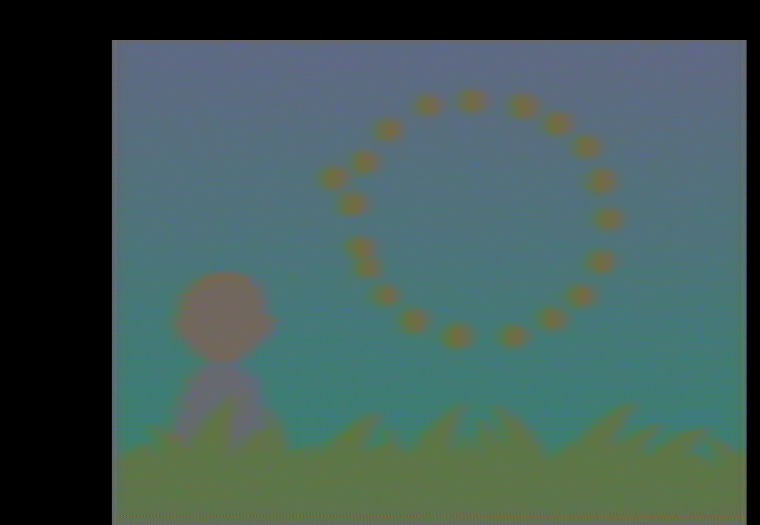

Yours:
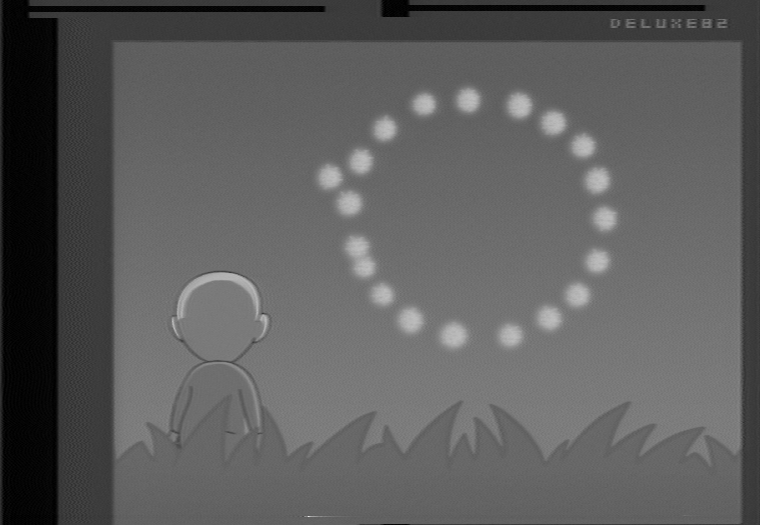
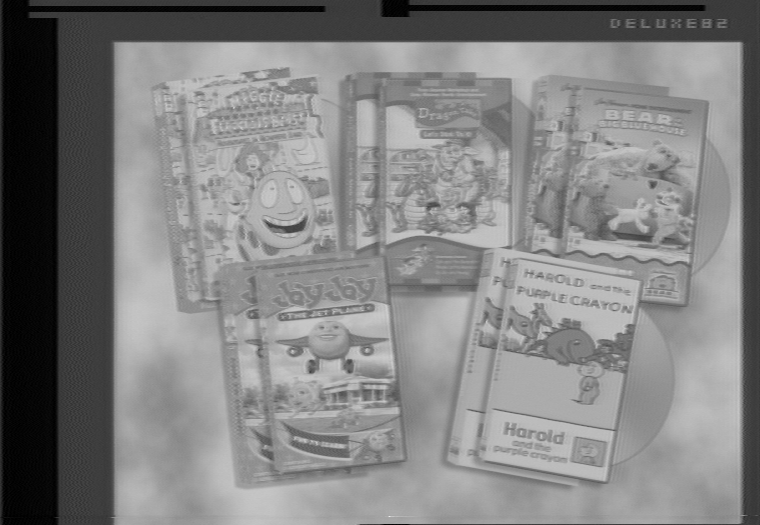

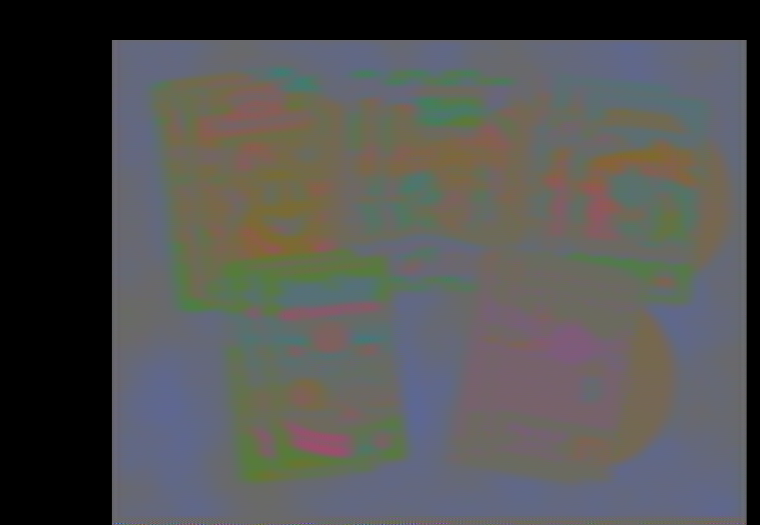
Mine:
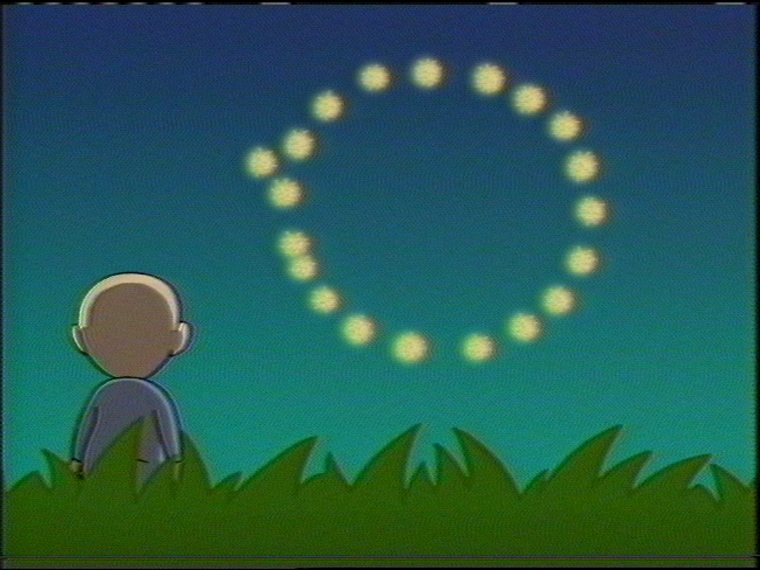
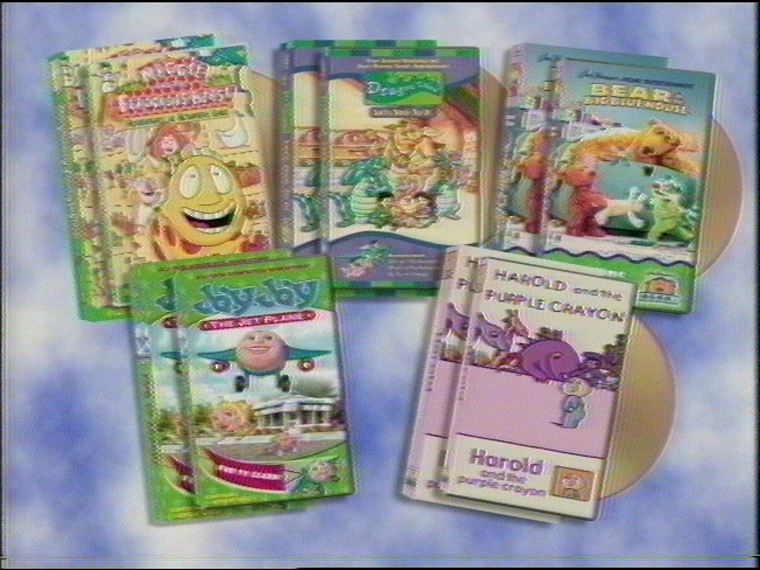
Yours:
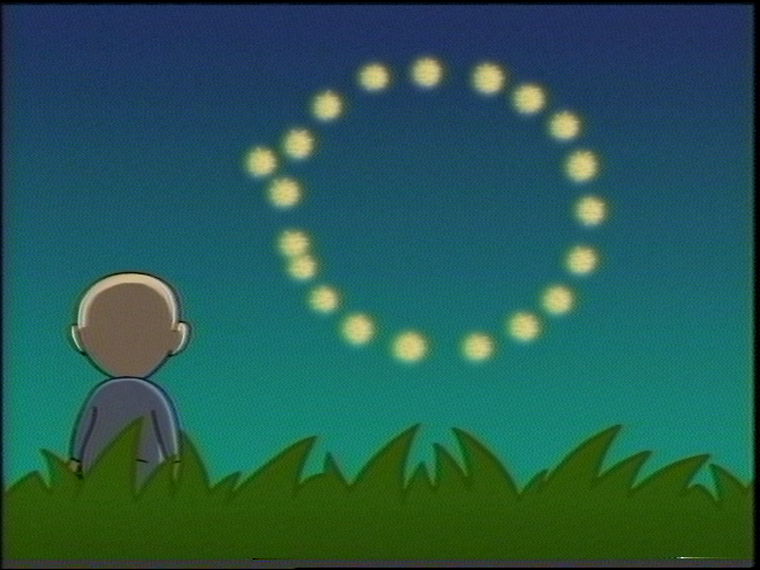
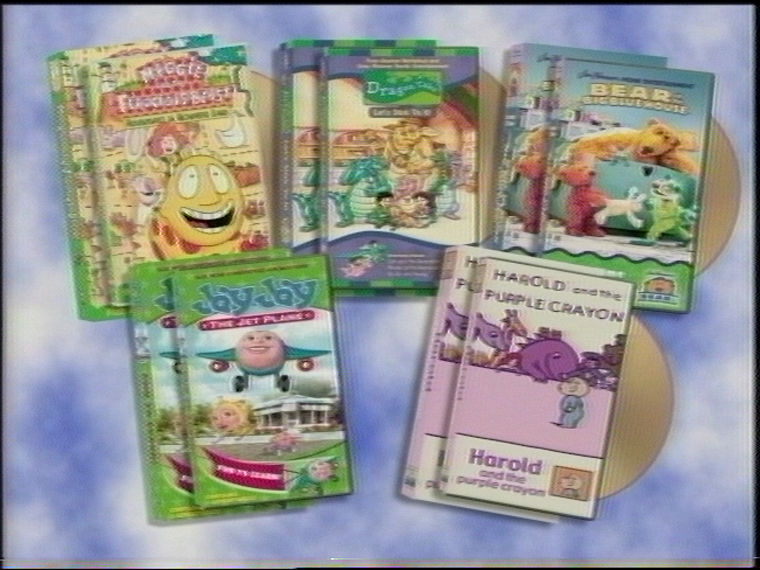
Last edited by Titan_91; 15th Jun 2021 at 21:08.
-
Hmm. The chroma is positioned slightly differently, too. But that may just be screener vs retail. I see your screener has a hair more picture visible before horizontal blanking on the right side. I'm hesitant to draw many conclusions from our comparison.

---
Finally got around to trying the front test points on the TEAC V-800G-F Hi8 deck, but the output level is insanely weak. This is with level=31. Meanwhile, the SW P test point (head switch pulse) outputs a very strong signal.
[Attachment 59450 - Click to enlarge]
ffplay with contrast=15 (normally use 1.5)
[Attachment 59449 - Click to enlarge]
I'm attaching the samples anyway, in case they are of some use.Last edited by Brad; 16th Jun 2021 at 01:27.
My YouTube channel with little clips: vhs-decode, comparing TBC, etc. -
Results aren't going to be exact as we are using different equipment and different cables. The overscan area of the screener or horizontal/vertical positioning might be slightly different. IMO the comparisons are still very valid. I didn't notice this before either, but your sample has captured more sharpness. It's easiest to tell by looking at the "deluxe" text in the VBI.
Looking at this frame/field of video between our two captures:
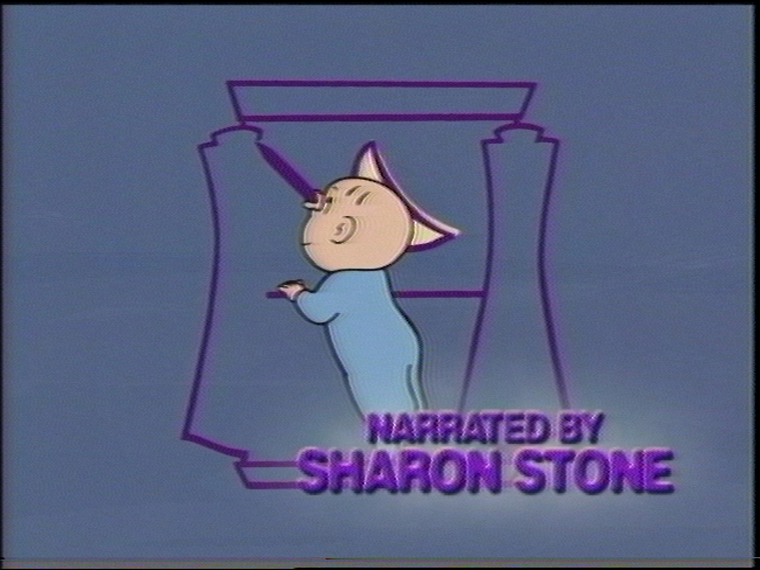
My spectrum plot:

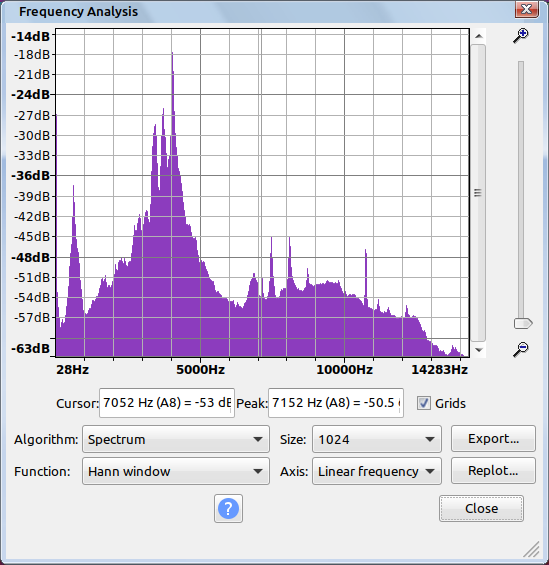
Your spectrum plot:

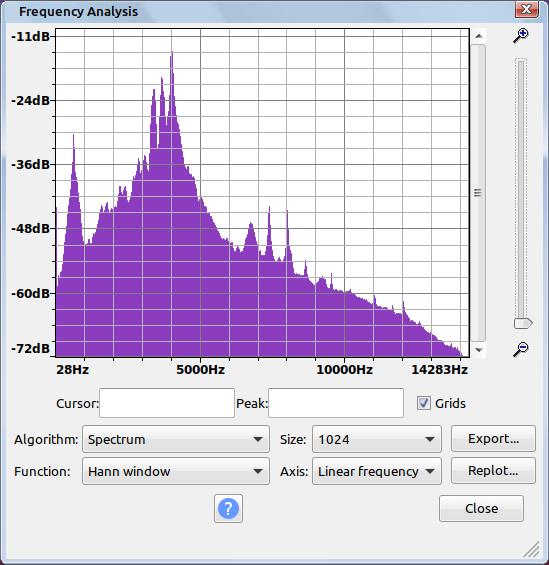
You appear to be capturing a bit more bandwidth. That would explain the extra sharpness. The luma waveform in you capture seems fatter. And I do think it's your VCR because of the Beast Wars sample as well, which still impresses me in terms of sharpness as I have been unable to match that with my two VCRs. Yes our tapes aren't from the exact same master, but my machine is made in China and is two years newer, right when DVD was starting to take over and cost cutting measures were hitting VCRs. I've been doing these comparisons with the sl=50 flag for sharpness level 50. I'm assuming that's what you used for Beast Wars.
That's not a good omen for Hi8 decoding unfortunately...Last edited by Titan_91; 17th Jun 2021 at 13:27.
-
I tried capturing without the filter. As expected, this results in worse reflections (ghosting/ringing) and doesn't improve sharpness. So from this, if you used a low pass filter of some sort combined with a 50 ohm small flexible coaxial cable with BNC connectors, your results may potentially be even better.
If you're interested you could try this for around 5MHz:
https://www.ebay.com/itm/174251029394
Or this for 7MHz:
https://www.ebay.com/itm/264445512335
Or this one for 10MHz:
https://www.ebay.com/itm/293811621074
It's hard to say what would be best to capture the entire luma signal while minimizing noise in the upper band. I personally think the first one is too strict. The one I use is 13.2MHz, but I have that frequency mainly for Laserdisc. I don't think anyone has tried any other filters besides that.
In a nutshell we want all of what's in blue and yellow, and none of what's in green. This is not physically possible, but getting as close to that result within a reasonable budget would be ideal. It may filter out that high frequency noise in the scene with the circle of stars as well.

Last edited by Titan_91; 21st Jun 2021 at 21:08.
-
vhs-decode does filter out the unwanted frequency bands in software, though it needs a lot of improvement still. It's very possible the external one is of some help still though, I don't know. Some people on the discord also had some help from putting a 0.1uf or similar capacitor in line (some VCRs has this on the test point but many don't.), and people have experimented with a balun as well which may or may not help. There is a low-pass filter of some sort on the cx cards input too, at least a crude one consisting of a capacitor to ground and maybe some more internally to avoid aliasing, though I don't know how effective it is.
What VCRs do seems to be using a "peaking amplifier" that amplifies the wanted frequency band with an emphasis at some specific frequency (I think videomem did some simulation of the response of one way back in this thread.). I think the "peak" is what the "SP Q/LP Q" and similar trimpots in older vcrs impacts. Additionally there is some low-pass or band-pass filter to take out the chroma part of the raw signal, and I think some low-pass to supress the higher harmonics you see in the spectrum (head amp and video IC specs talk note supression and such at 8 mhz). Right now vhs-decode just does a high and low pass, and has an adjustable boost to the sync tip frequency area, but I want to try to more accurately emulate the rf filtering done in a VCR which would could hopefully help improve things a bit.
I also just picked up a betamax vcr (a Sony SL-C5E which is an old and basic model), though I don't have any tapes yet so haven't been able to test yet. It's too bad with the rf output on the TEAC, I will try a capture from one of my Hi8 camcorders at some point with the ddd to see if that works better. -
If we don't want to capture above 7MHz, aren't we better off using the 14MSPS @ 10-bit mode? Interested in what you see when plotting the attached captures.
I'm regretting the way I named these, as my intended period spacer looks like a decimal point, but too late now.
I added Sharpen(1,0) in Avisynth to both of these images to exaggerate the noise. The 14MSPS (the second one) still has the high-frequency noise, but less of it.
[Attachment 59509 - Click to enlarge]
[Attachment 59510 - Click to enlarge]Last edited by Brad; 24th Jun 2021 at 00:12. Reason: Clarity: MHz -> MSPS
My YouTube channel with little clips: vhs-decode, comparing TBC, etc. -
Comparing the screenshots by switching between tabs the faint wavy stripes are not as prevalent using the 10-bit 14.3MSPS mode, which captures 7.15MHz of bandwidth. The difference is minimal though and I had to zoom way in to see it. Perhaps this in combination with the right low pass filter will be the end game for the hardware side of things. I'll try that when my filter comes in.
Last edited by Titan_91; 23rd Jun 2021 at 13:04.
-
I have three copies of one movie release: two Canadian and one US. My original plan with them was to Median them together in order to remove dropouts. (Open matte version is only on VHS and VCD.)
Instead I've found that they're not really the same.
A (CA)
[Attachment 59517 - Click to enlarge]
B (CA)
[Attachment 59518 - Click to enlarge]
C (US)
[Attachment 59519 - Click to enlarge]
Same vhs-decode options for all three:
More image comparisons:Code:~/./vhs-decode/vhs-decode -t 4 --10cxadc -n --noAGC mmpr_A_2.u16 mmpr_A_2
https://imgsli.com/NTg3MTU
Notes:
https://imgsli.com/NTg3MTY
- "C" looks the best. "B" decodes with the most contrast for some reason, but the edges are downright ugly and I see extra noise on the "Create-A-Movie" cover.
- Both CA's exhibit the same slight horizontal squish in comparison to the US.
- Each tape has its own form of Macrovision. The US copy doesn't have the white HBI block. "B" has the longest white VBI line, on "C" it's shorter, and on "A" it's non-existent.
- "B" has an extra data code above the Macrovision VBI.
[Attachment 59525 - Click to enlarge]
EDIT: Attached MKVs of the three samples.Last edited by Brad; 24th Jun 2021 at 22:27. Reason: Attach MKVs
My YouTube channel with little clips: vhs-decode, comparing TBC, etc. -
I agree that C looks the best. It has the least noise and the edges of brightness transitions look pretty good. B has more noise than A, likely due to the reduced signal amplitude. Perhaps B is losing its magnetism faster than A or C.
Audacity doesn't support unsigned 16-bit sources for analyzing the waveforms. I'm sure I can find a simple way to convert your 10-bit padded source to signed 16-bit. -
Hmm, they opened for me in Audacity and the spectrograms displayed. Do you mean that the graphs are wrong?
Here's a potential NTSC S-VHS sample, which causes vhs-decode to immediately barf. I don't know if this RF is accurate, since the SLV-779HF is just a plain VCR without even SQPB. And the CX cards may not have sufficient bandwidth? But a signal is there.
Code:~/./vhs-decode/vhs-decode -t 4 --cxadc3 -n --noAGC -tf "SVHS" mqst-30_tsg_sp.svhs35m_fail.flac mqst-30_tsg_sp.svhs35m_fail NTSC SVHS has not been tested yet! /usr/local/lib/python3.8/dist-packages/numpy/core/fromnumeric.py:87: RuntimeWarning: overflow encountered in reduce return ufunc.reduce(obj, axis, dtype, out, **passkwargs) /usr/local/lib/python3.8/dist-packages/numpy/core/fromnumeric.py:87: RuntimeWarning: invalid value encountered in reduce return ufunc.reduce(obj, axis, dtype, out, **passkwargs) /usr/local/lib/python3.8/dist-packages/scipy/signal/filter_design.py:2555: RuntimeWarning: invalid value encountered in true_divide k_z = k * real(prod(fs2 - z) / prod(fs2 - p)
My YouTube channel with little clips: vhs-decode, comparing TBC, etc. -
It works for you? I tried a TBC file once which I believe is unsigned 16-bit. Perhaps the padded 10-bit samples are actually signed 16-bit then. Thanks, I'll have try it.
I actually had this S-VHS idea recently myself. My VCR supports super quasi playback, but I couldn't find any reasonably priced prerecorded S-VHS material on eBay to test it with. I then came to learn it mostly sold as blank tapes with very few prerecorded titles. I also wonder what the limiting factor is with S-VHS compatibility. Is it the RF frequencies or bandwidth both being higher? Or is it the demodulation and decoding circuitry in standard VCRs? Do SQPB VCRs demodulate the higher bandwidth luma signal then band limit the output back down to 3MHz due to the VHS specification? Clearly you have something there in your capture from your VHS machine. -
I believe Audacity won't import raw header-less unsigned 16-bit, but will open FLAC flagged as unsigned 16-bit.
My YouTube channel with little clips: vhs-decode, comparing TBC, etc. -
My JVC BR-S525U has front panel test points for V-RF, A-RF, D-PULSE, and GND. A bunch of models in this range have the same feature. The layout is like this BR-S822E shown on YouTube.
[Attachment 59581 - Click to enlarge]
Unfortunately, my unit developed a loading problem years ago. At the start of these two Audacity screenshots we see Stand By. Then there's a brief moment of playback, before Error Code 71 showed on the front panel and the signal winds down.
[Attachment 59577 - Click to enlarge]
[Attachment 59578 - Click to enlarge]
I assume the square wave near 1.5MHz is the 30Hz head-switch pulse?
Instead of posting that clip, which was just blackness at the start of Spider-Man, I've attached a short sample of You've Got Mail briefly playing a recognizable image.
In both cases, the captured RF is lower in amplitude than the Sony.My YouTube channel with little clips: vhs-decode, comparing TBC, etc. -
Looking at your 28.6MSPS 8-bit vs. 14.3MSPS 10-bit captures:
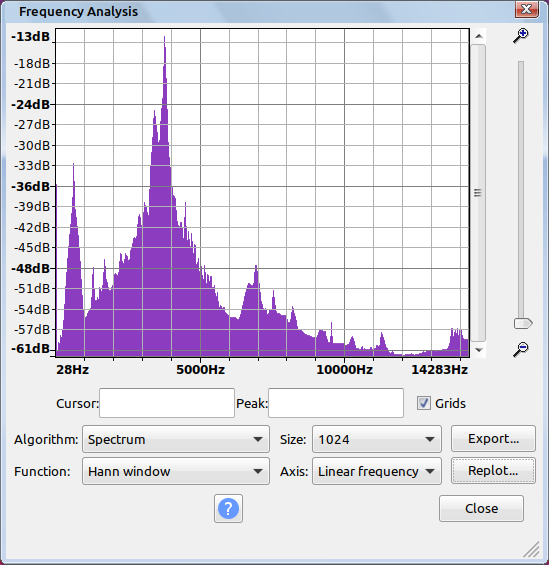


Your 8-bit capture has a black SNR of roughly 35dB while your 10-bit one is showing about 37dB. Your signal level on the 10-bit capture is slightly lower according to the spectrum plots but that doesn't matter in this case. Are you planning to use a mini coax cable and 50 ohm BNC connections on your Sony VCR at some point? That may improve a bit more. I achieved 40dB black SNR with those connections. My 5.35MHz filer should be here this weekend or Monday. Then I'll try the Stuart Little 2 bumpers with that, both with 8-bit and 10-bit captures.Last edited by Titan_91; 26th Jun 2021 at 14:52.
-
I'd like to, but if soldering is required, that's an obstacle. I've never done it.
Next VCR test. Samsung VR8419C test points are super straightforward:
[Attachment 59593 - Click to enlarge]
Unfortunately, the signal I'm getting is weird. The waveform varies in intensity in a periodic manner, and it's off-centre.
[Attachment 59594 - Click to enlarge]
[Attachment 59595 - Click to enlarge]
[Attachment 59596 - Click to enlarge]
I see a literal reflection in the spectrogram; a weaker copy of the signal upside-down and above the original. Is this what people mean when they talk about signal reflections? I thought they were copies but not inverted.
vhs-decode manages to turn it into something, but it's very chaotic.
Last edited by Brad; 28th Jun 2021 at 10:18. Reason: Typo
My YouTube channel with little clips: vhs-decode, comparing TBC, etc. -
JVC HR-J693U. Again, nicely-labelled and arranged test points. But the RF output level is even lower than the TEAC Hi8. The audio FM isn't much higher.
1-second samples from all test points, all at level=31.My YouTube channel with little clips: vhs-decode, comparing TBC, etc. -
Yeah that JVC must be crap for RF capture. Your Hi-Fi test point is extremely noisy and there are other signals aliasing (corrupting) your two audio tracks at 1.3MHz and 1.7MHz.
Last edited by Titan_91; 30th Jun 2021 at 08:06.
-
The ~5MHz LPF came in. Using sharpness level 50, SNR for me did increase from 36dB to 42dB with the filter in place, with and without the 10-bit mode. It also eliminated some squiggly patterns, but now I've got the dreaded luma/chroma crosstalk diamond pattern. I can't explain why, as the filter should not have affected that aspect since the guard band between chroma and luma is further down the spectrum. 8-bit first and 10-bit second for all screenshots:
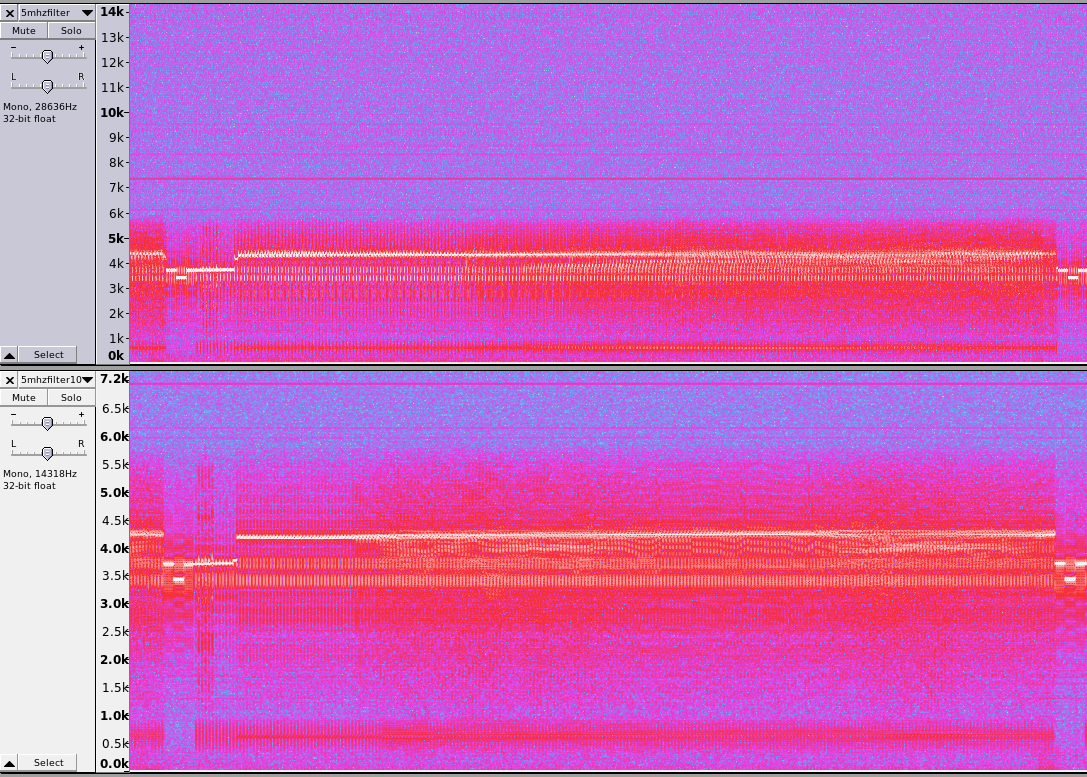
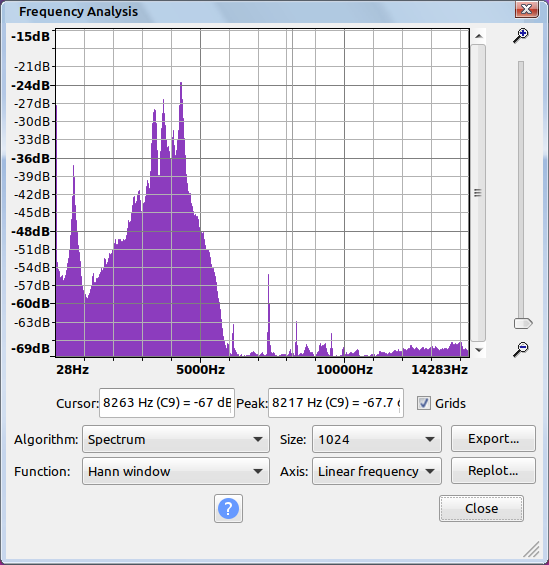
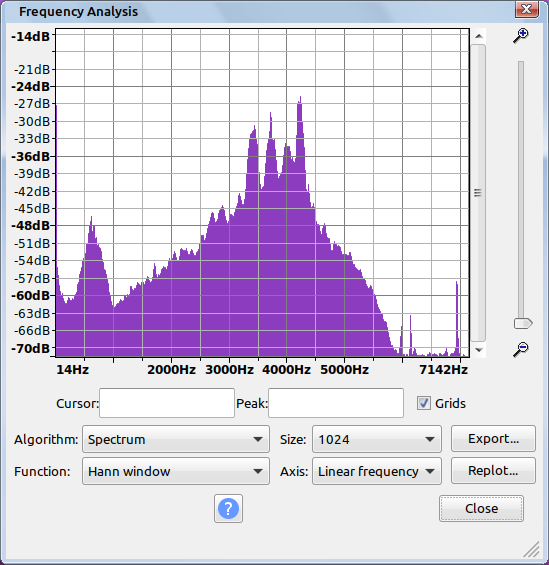
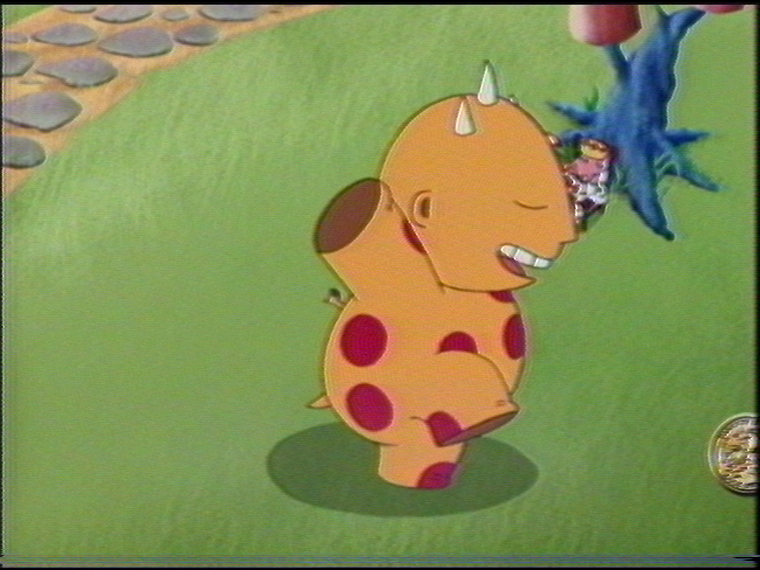
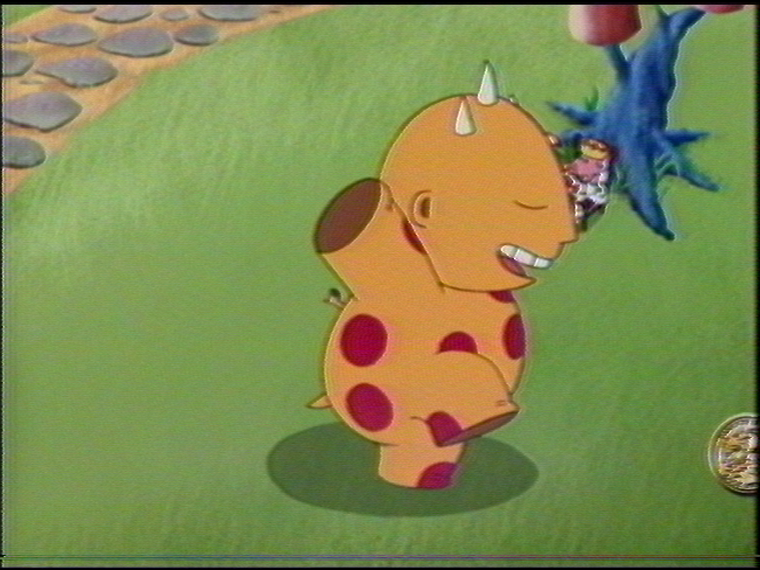
Also, my 10-bit sample crashed vhs-decode so it didn't finish. This sample and and terminal output are below.
https://www.mediafire.com/file/egbosrdk1iuj7fd/5mhzfilter10bit.flac/file
Code:File Frame 584: CAV Frame #None Unknown Field phaseID sequence mismatch (3->2) (player may be paused) File Frame 585: CAV Frame #None Unknown Field phaseID sequence mismatch (2->1) (player may be paused) Field phaseID sequence mismatch (1->4) (player may be paused) [flac @ 0x55ec36d6d880] switching bps mid-stream is not supported [flac @ 0x55ec36d6d880] decode_frame() failed [flac @ 0x55ec36d72940] switching bps mid-stream is not supported [flac @ 0x55ec36d72940] decode_frame() failed [flac @ 0x55ec36d77a00] switching bps mid-stream is not supported [flac @ 0x55ec36d77a00] decode_frame() failed [flac @ 0x55ec36d7cac0] switching bps mid-stream is not supported [flac @ 0x55ec36d7cac0] decode_frame() failed [flac @ 0x55ec36d81b80] switching bps mid-stream is not supported [flac @ 0x55ec36d81b80] decode_frame() failed [flac @ 0x55ec36d86c40] switching bps mid-stream is not supported [flac @ 0x55ec36d86c40] decode_frame() failed [flac @ 0x55ec36d8bd00] switching bps mid-stream is not supported [flac @ 0x55ec36d8bd00] decode_frame() failed [flac @ 0x55ec36d90dc0] switching bps mid-stream is not supported [flac @ 0x55ec36d90dc0] decode_frame() failed Field phaseID sequence mismatch (1->4) (player may be paused) [flac @ 0x55ec36d95e80] switching bps mid-stream is not supported [flac @ 0x55ec36d95e80] decode_frame() failed [flac @ 0x55ec36d9af40] switching bps mid-stream is not supported [flac @ 0x55ec36d9af40] decode_frame() failed [flac @ 0x55ec36da0000] switching bps mid-stream is not supported [flac @ 0x55ec36da0000] decode_frame() failed [flac @ 0x55ec36da50c0] switching bps mid-stream is not supported [flac @ 0x55ec36da50c0] decode_frame() failed [flac @ 0x55ec36d3c100] switching bps mid-stream is not supported [flac @ 0x55ec36d3c100] decode_frame() failed [flac @ 0x55ec36d5e8c0] switching bps mid-stream is not supported [flac @ 0x55ec36d5e8c0] decode_frame() failed [flac @ 0x55ec36d63700] switching bps mid-stream is not supported [flac @ 0x55ec36d63700] decode_frame() failed Error while decoding stream #0:0: Invalid data found when processing input [flac @ 0x55ec36d687c0] switching bps mid-stream is not supported [flac @ 0x55ec36d687c0] decode_frame() failed Error while decoding stream #0:0: Invalid data found when processing input [flac @ 0x55ec36d6d880] switching bps mid-stream is not supported [flac @ 0x55ec36d6d880] decode_frame() failed Error while decoding stream #0:0: Invalid data found when processing input [flac @ 0x55ec36d72940] switching bps mid-stream is not supported [flac @ 0x55ec36d72940] decode_frame() failed [flac @ 0x55ec36d77a00] switching bps mid-stream is not supported [flac @ 0x55ec36d77a00] decode_frame() failed Error while decoding stream #0:0: Invalid data found when processing input Last message repeated 1 times [flac @ 0x55ec36d7cac0] switching bps mid-stream is not supported [flac @ 0x55ec36d7cac0] decode_frame() failed Error while decoding stream #0:0: Invalid data found when processing input [flac @ 0x55ec36d81b80] switching bps mid-stream is not supported [flac @ 0x55ec36d81b80] decode_frame() failed [flac @ 0x55ec36d86c40] switching bps mid-stream is not supported [flac @ 0x55ec36d86c40] decode_frame() failed Error while decoding stream #0:0: Invalid data found when processing input Last message repeated 1 times [flac @ 0x55ec36d8bd00] switching bps mid-stream is not supported [flac @ 0x55ec36d8bd00] decode_frame() failed Error while decoding stream #0:0: Invalid data found when processing input [flac @ 0x55ec36d90dc0] switching bps mid-stream is not supported [flac @ 0x55ec36d90dc0] decode_frame() failed [flac @ 0x55ec36d95e80] switching bps mid-stream is not supported [flac @ 0x55ec36d95e80] decode_frame() failed Error while decoding stream #0:0: Invalid data found when processing input Last message repeated 1 times [flac @ 0x55ec36d9af40] switching bps mid-stream is not supported [flac @ 0x55ec36d9af40] decode_frame() failed Error while decoding stream #0:0: Invalid data found when processing input [flac @ 0x55ec36da0000] switching bps mid-stream is not supported [flac @ 0x55ec36da0000] decode_frame() failed Error while decoding stream #0:0: Invalid data found when processing input [flac @ 0x55ec36da50c0] switching bps mid-stream is not supported [flac @ 0x55ec36da50c0] decode_frame() failed Error while decoding stream #0:0: Invalid data found when processing input [flac @ 0x55ec36d3c100] switching bps mid-stream is not supported [flac @ 0x55ec36d3c100] decode_frame() failed [flac @ 0x55ec36d5e8c0] switching bps mid-stream is not supported [flac @ 0x55ec36d5e8c0] decode_frame() failed Error while decoding stream #0:0: Invalid data found when processing input Last message repeated 1 times [flac @ 0x55ec36d63700] switching bps mid-stream is not supported [flac @ 0x55ec36d63700] decode_frame() failed [flac @ 0x55ec36d687c0] switching bps mid-stream is not supported [flac @ 0x55ec36d687c0] decode_frame() failed Error while decoding stream #0:0: Invalid data found when processing input Last message repeated 1 timesLast edited by Titan_91; 30th Jun 2021 at 20:38.
-
I'm seeing squiggles, but not diamonds/crosshatch in those two images.
My YouTube channel with little clips: vhs-decode, comparing TBC, etc. -
It's hard to see but noticeable when the video is actually playing. I should try and reproduce that with another tape to rule out the tape itself.
-
Someone on discord got a similar effect crosshatch pattern (with those sharp lines, a bit different from the low-frequency one brad had) when capturing with a ddd, using --high_boost 0 reducing the boost to high rf frequencies helped. the high frequency boost can help reduce streaking, especially on bad tapes on cxadc captures, but it can also end up boosting noise a bit much. Maybe the altered frequency response from the filter results in changes that reduces the need for the high frequency boosting.
-
Good observation. I looked very carefully at the spectrum between luma and chroma and saw nothing that looked like that soft crosstalk. But, there is that thin line/spike right above my luma cutoff using the filter. Maybe the filtering in vhs-decode is picking up that spike, causing the noise in the picture. Is there an adjustment I can make? I disabled the sharpness entirely but still see that noise a bit. The SNR improved with the filter so that's progress. That spike was previously drowned out by the luma's upper sideband. My filter is a bit aggressive too though with 50dB stop band rejection, maybe too much so. It's a metal device sealed with plumbing solder, so it may be homemade for HAM radio.
Last edited by Titan_91; 1st Jul 2021 at 15:51.
-
"Crafter's Workshop". The recordings both before and after this on the same tape are normal.
Overly-bright cartoon. The Sailor Moon clip at the end has normal levels.
My YouTube channel with little clips: vhs-decode, comparing TBC, etc.
Similar Threads
-
what is current "best" file uploading/sharing service?
By hydra3333 in forum Newbie / General discussionsReplies: 15Last Post: 30th Aug 2015, 04:39 -
How i can encode audio of "REMUX" to "BluRay.720p.DTS" wit handbrake?
By VideoHelp4Ever in forum Blu-ray RippingReplies: 1Last Post: 2nd Jul 2015, 12:41 -
[SOLVED] "--ipratio" "--pbratio"+"--scenecut" "--minkeyint" / "--keyint
By Kdmeizk in forum Video ConversionReplies: 14Last Post: 21st Jun 2015, 08:21 -
[Help] Problems with the "Title Button" in the "VTS ROOT" and "VTS Normal"
By kirous in forum Authoring (DVD)Replies: 8Last Post: 1st Nov 2014, 13:31 -
How to convert "Still Image" to "AVC file" (like as Godzilla Blu ray Menu)
By ningnong132 in forum Video ConversionReplies: 2Last Post: 8th Sep 2014, 05:23



 Quote
Quote